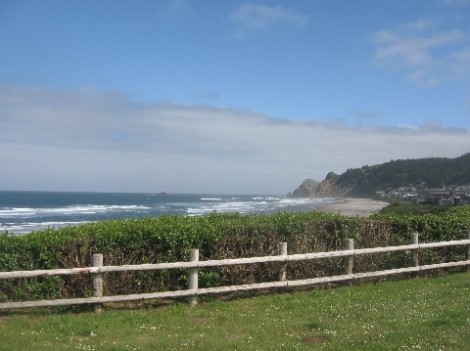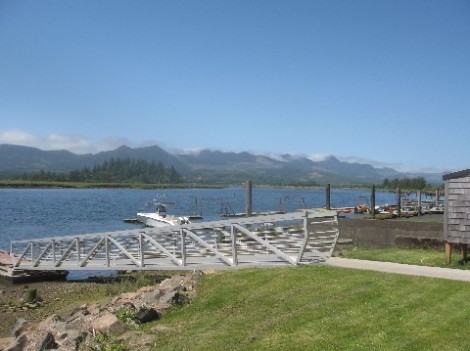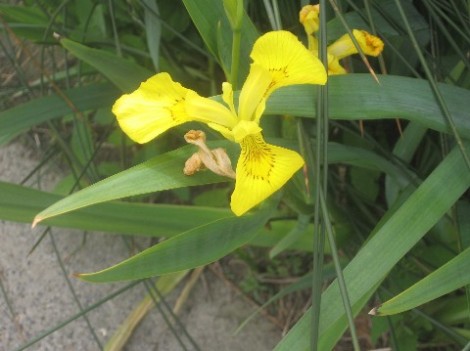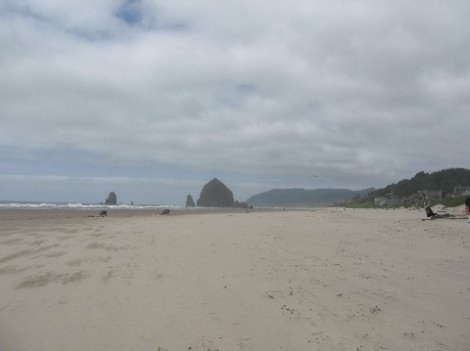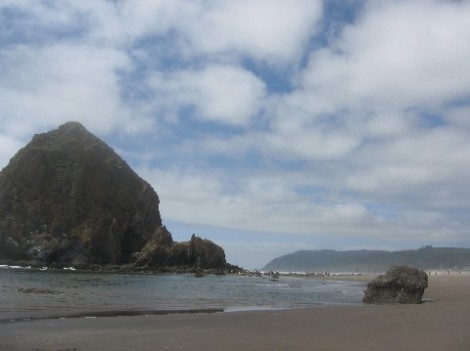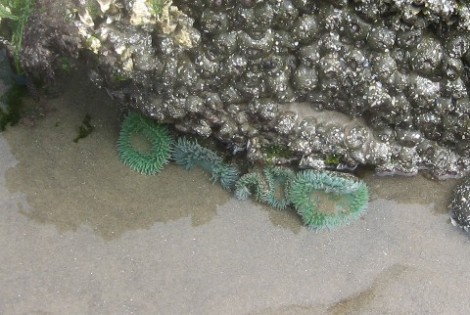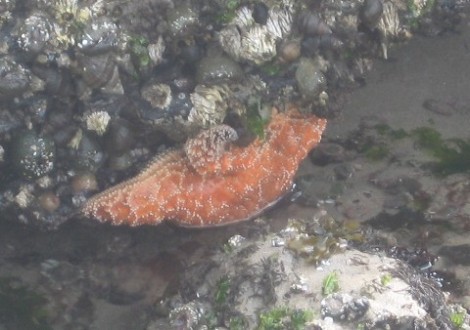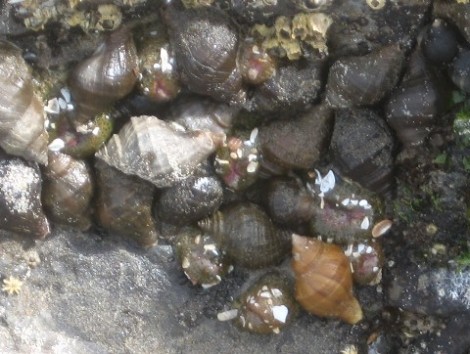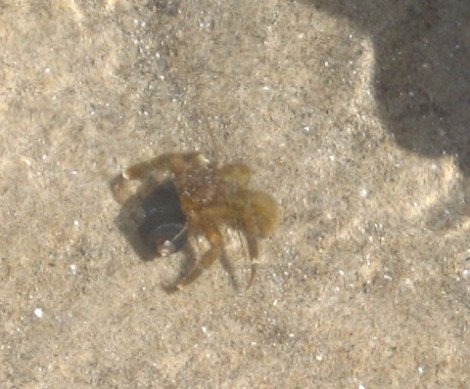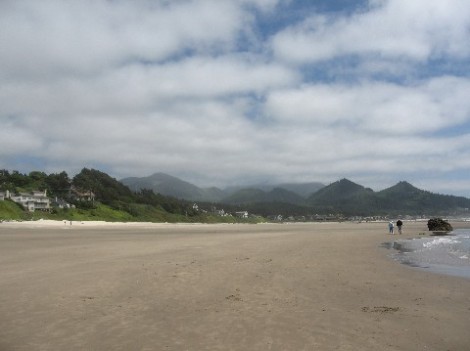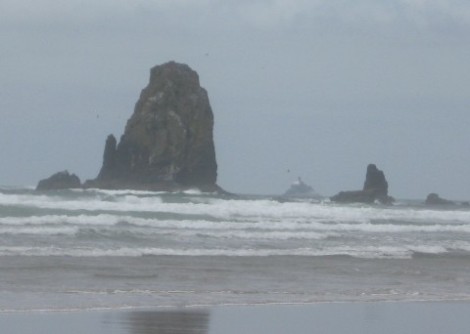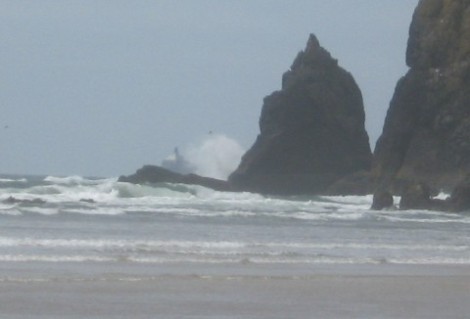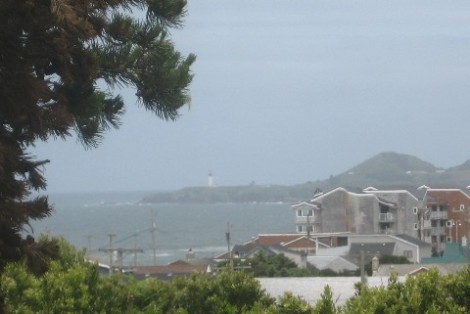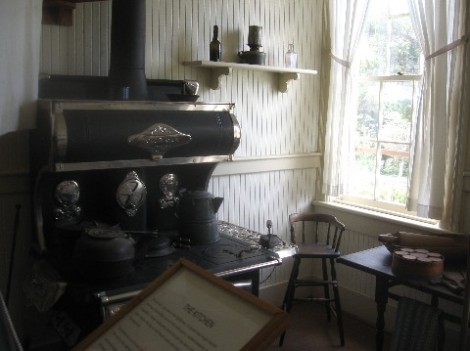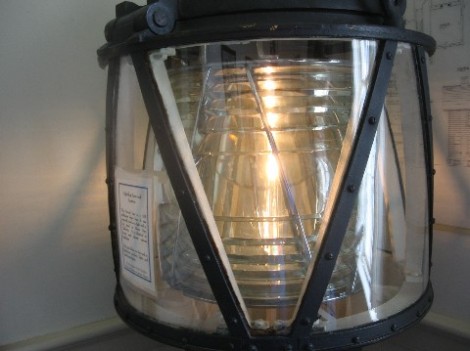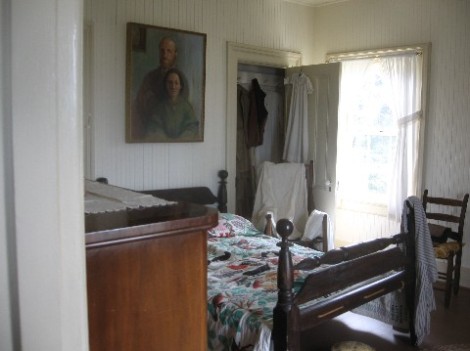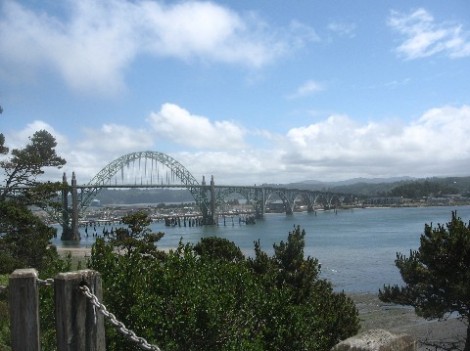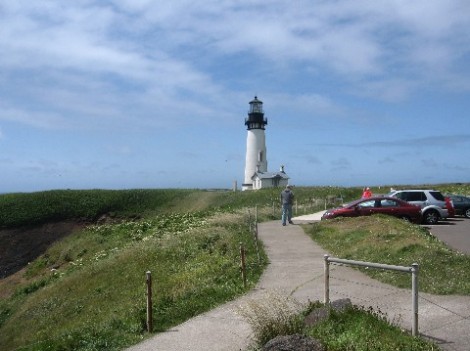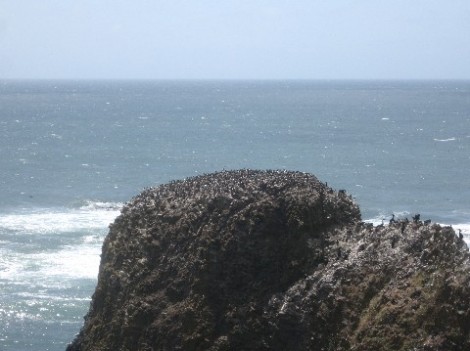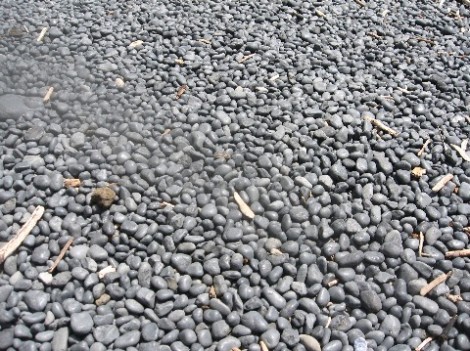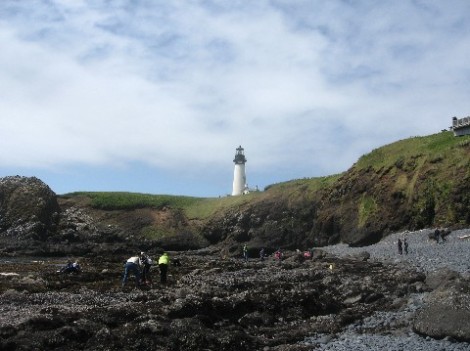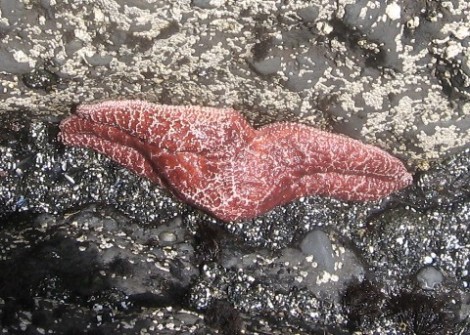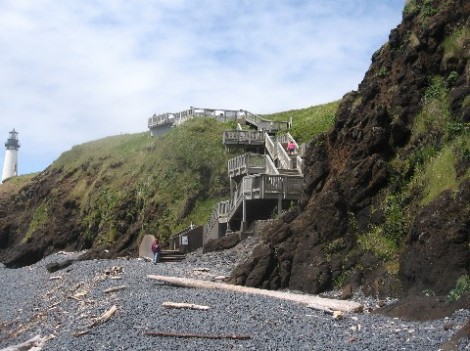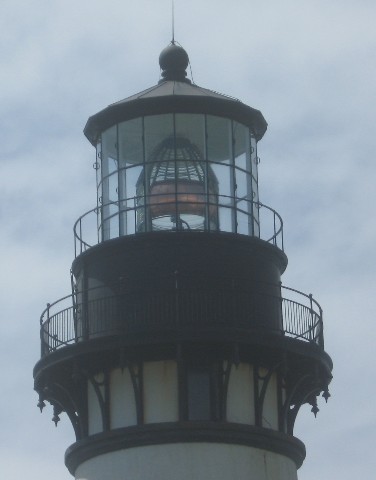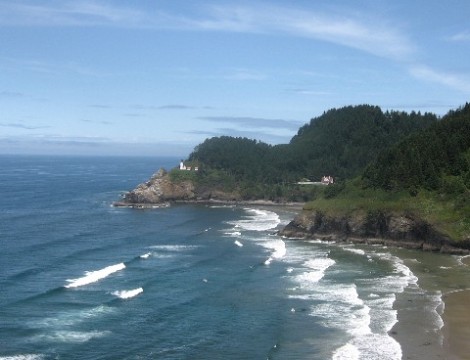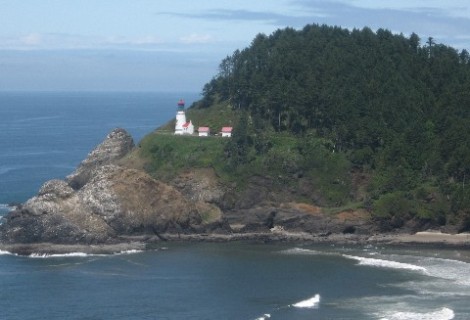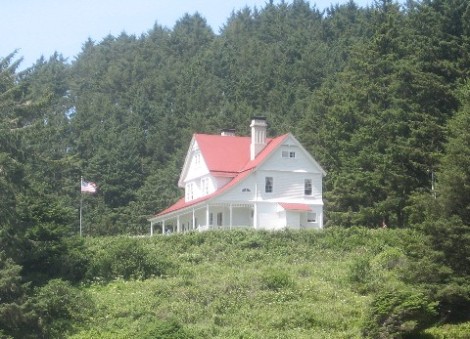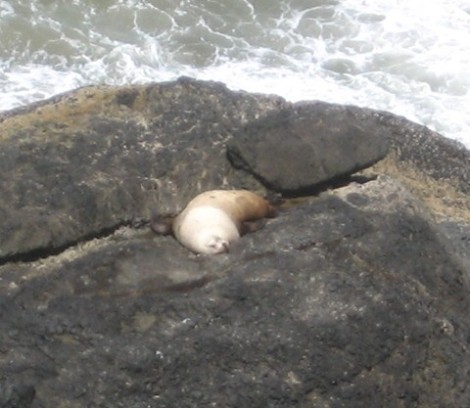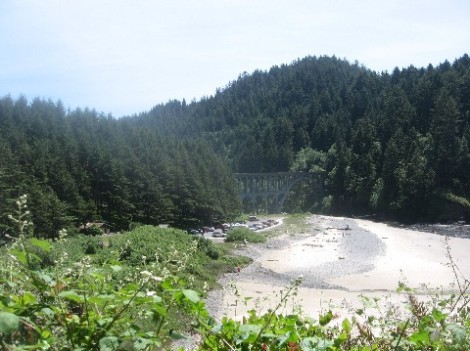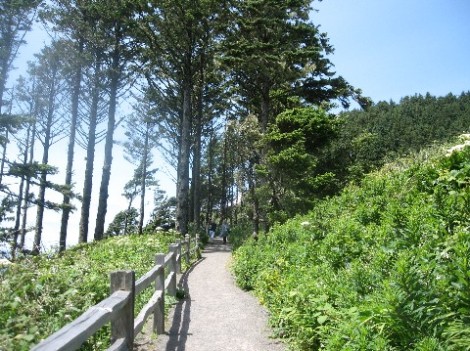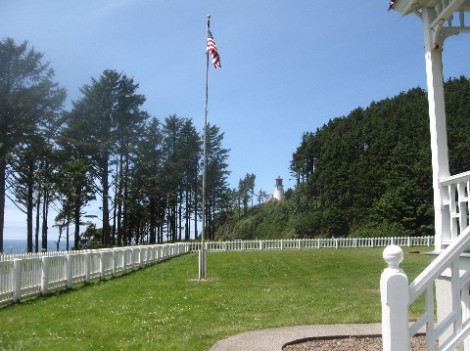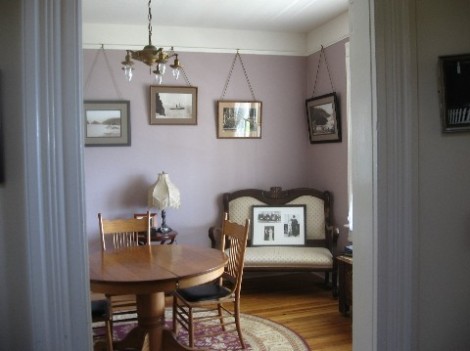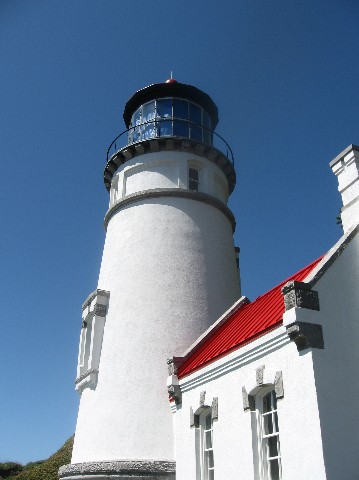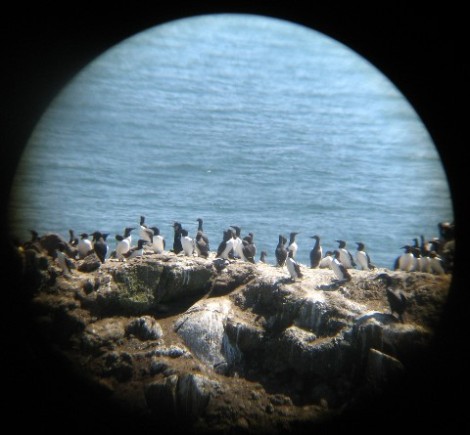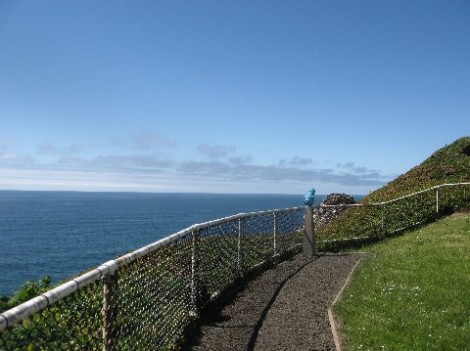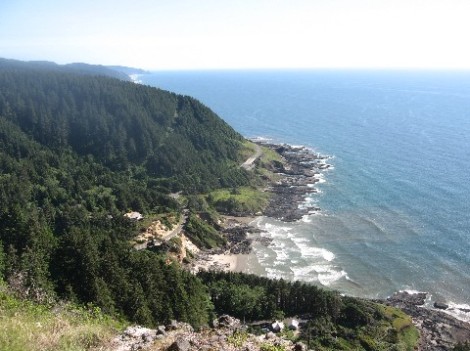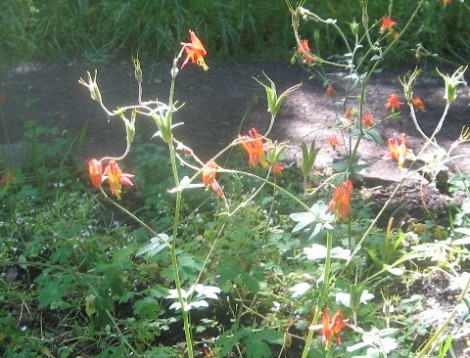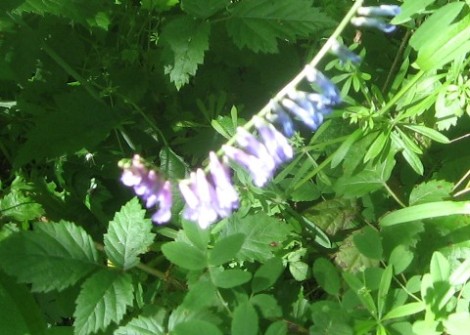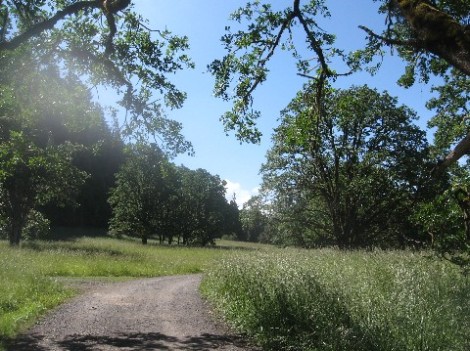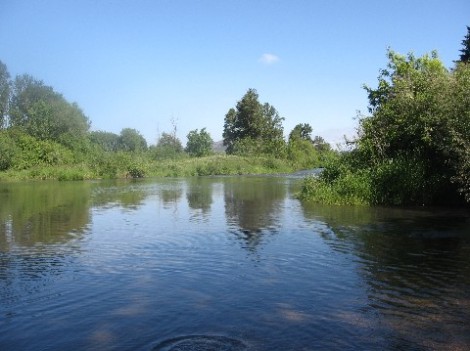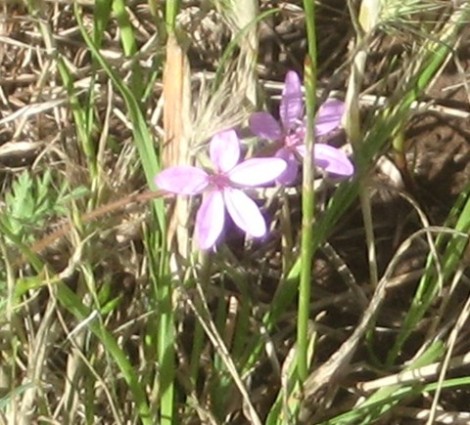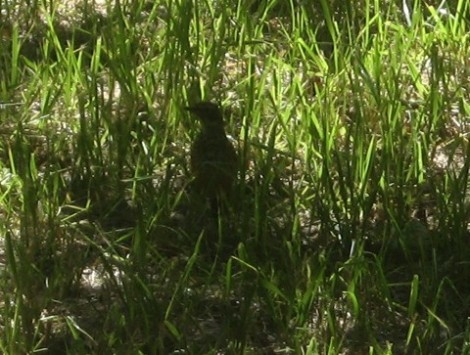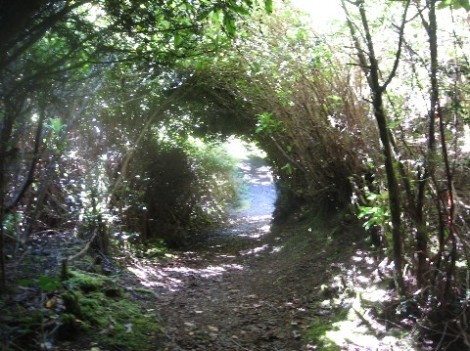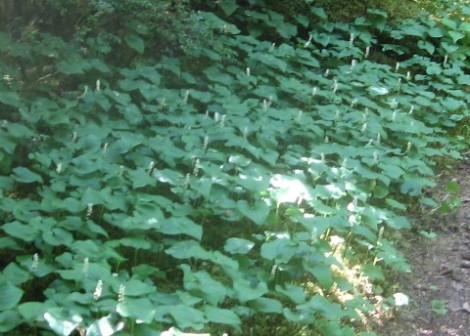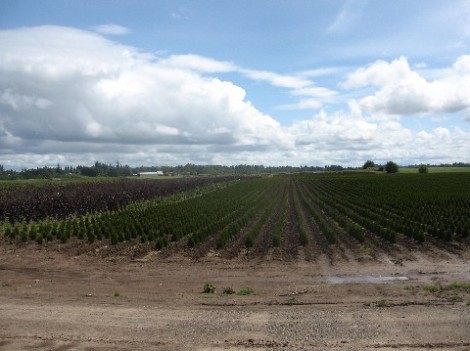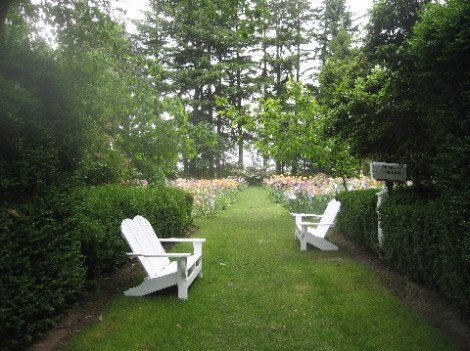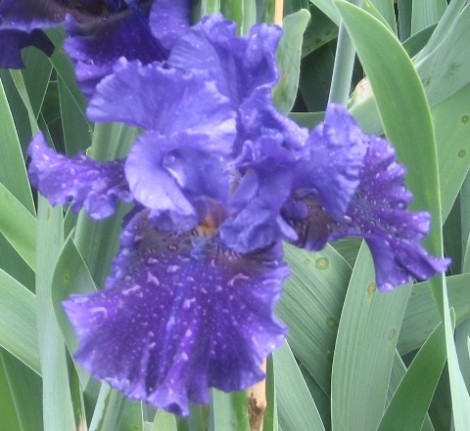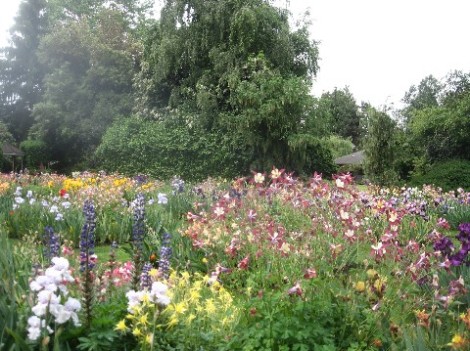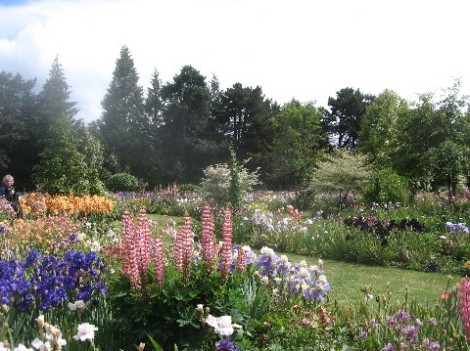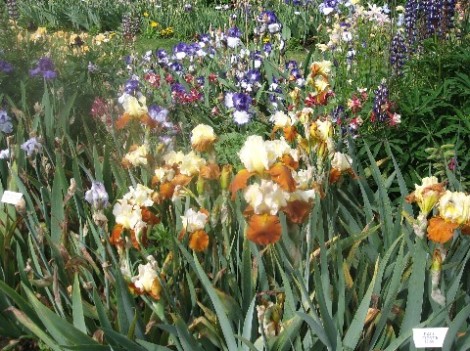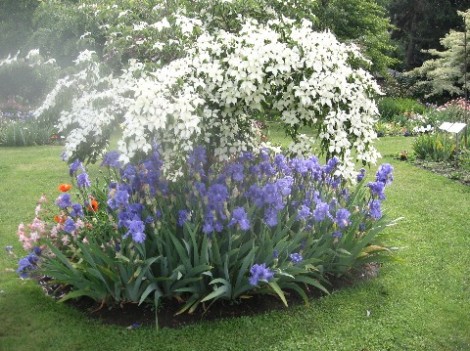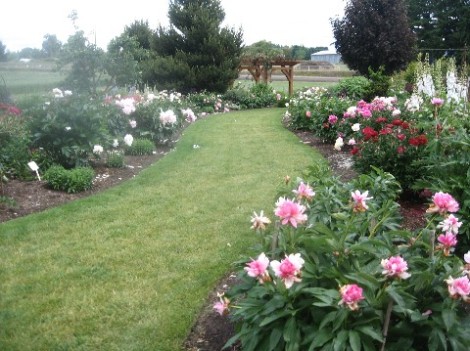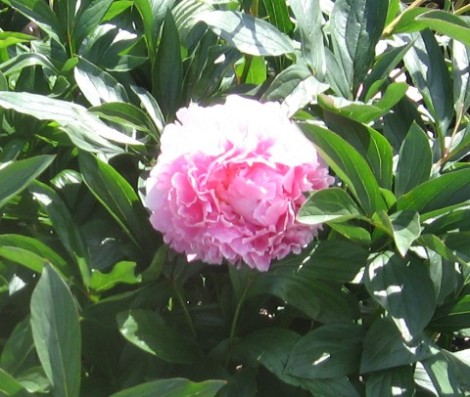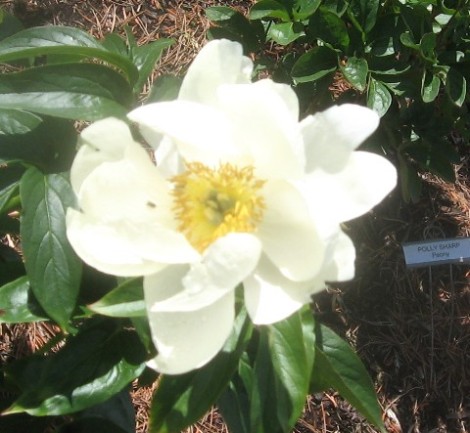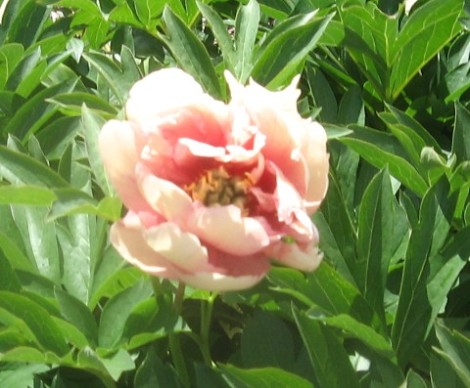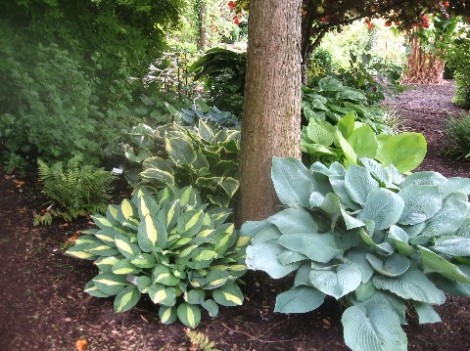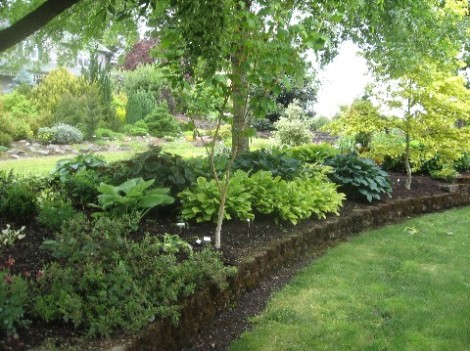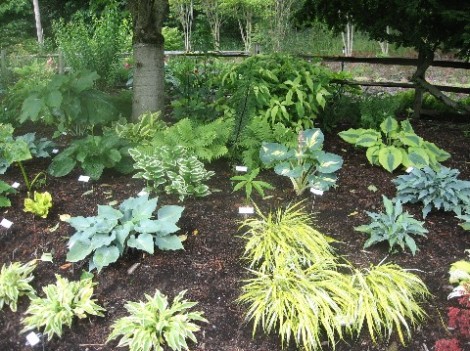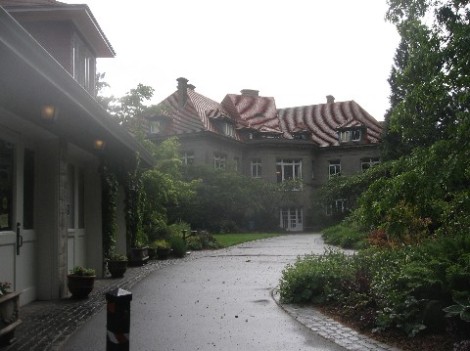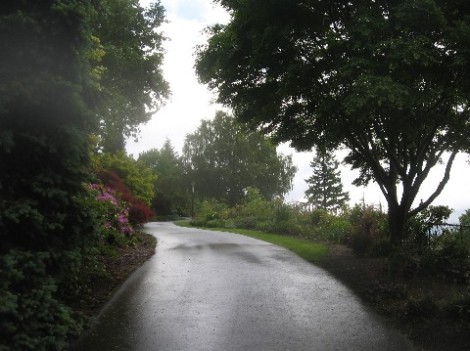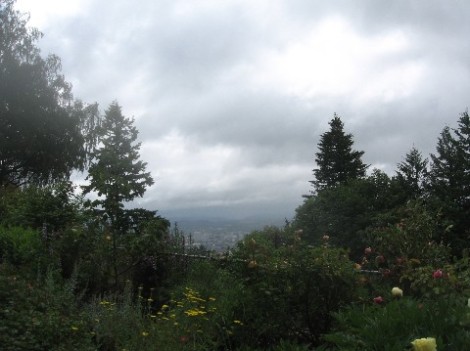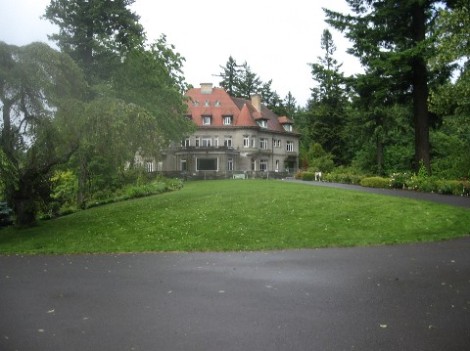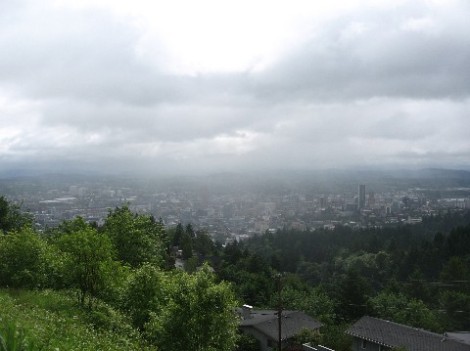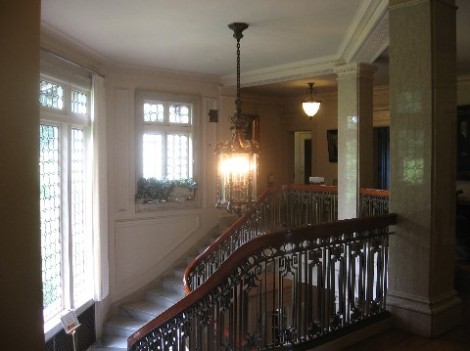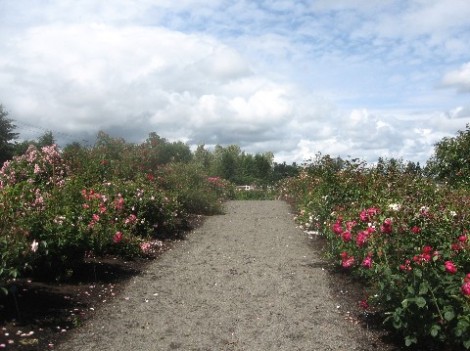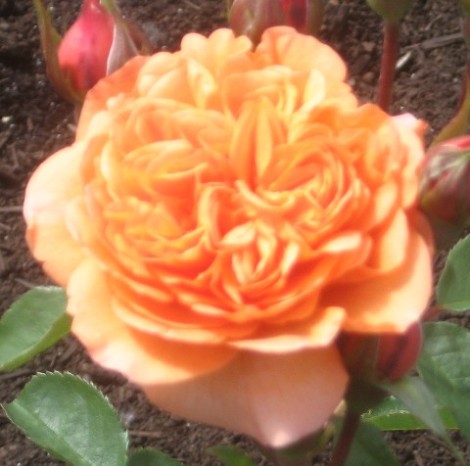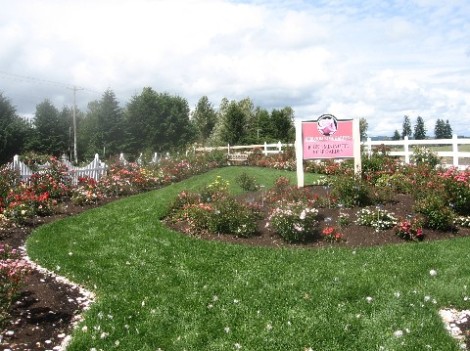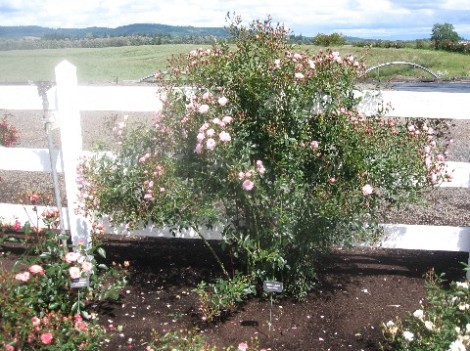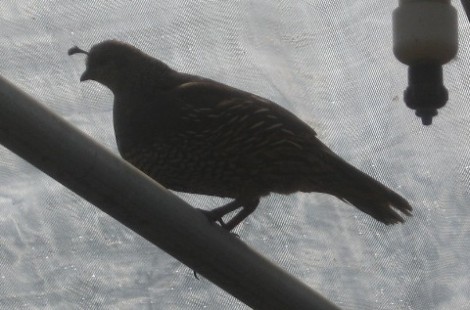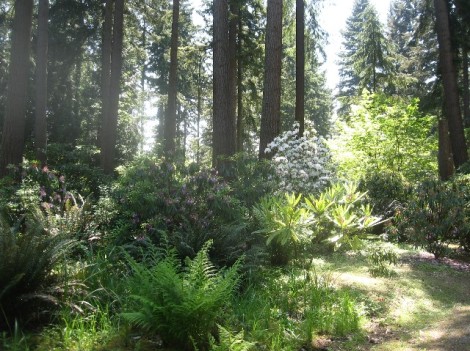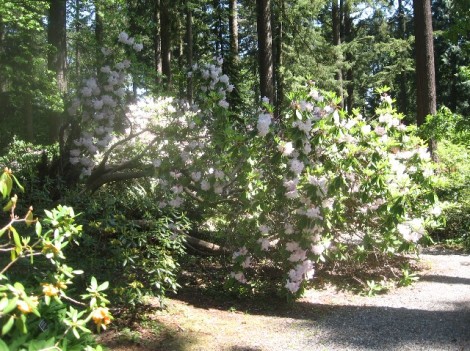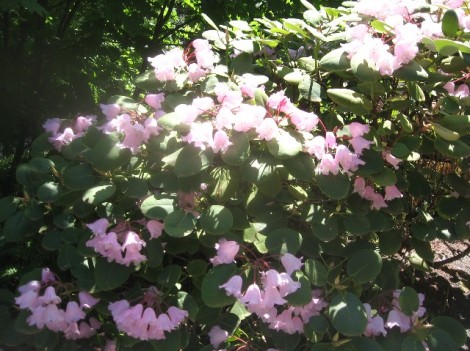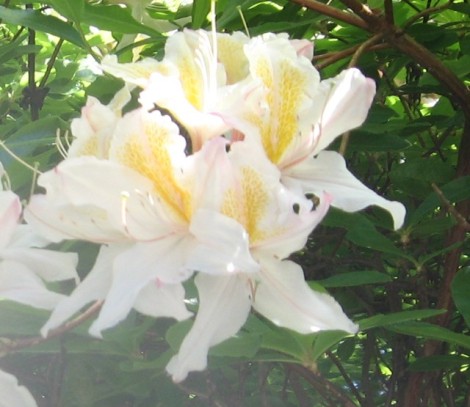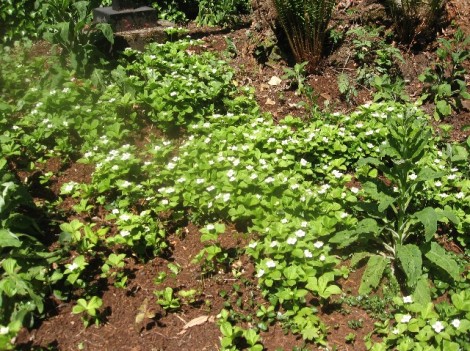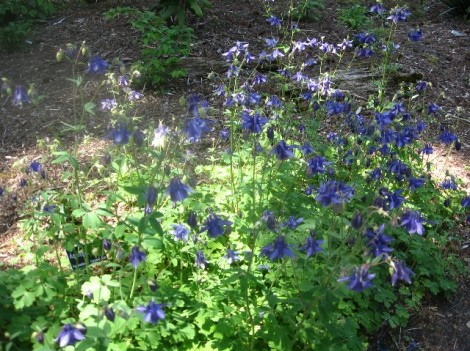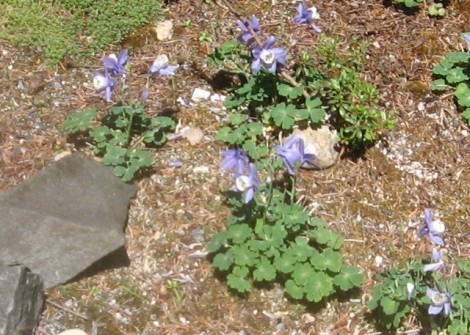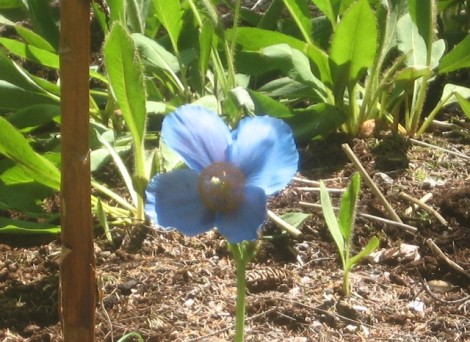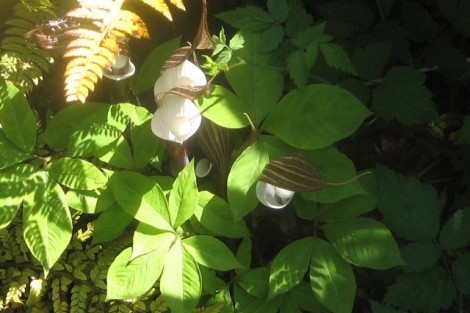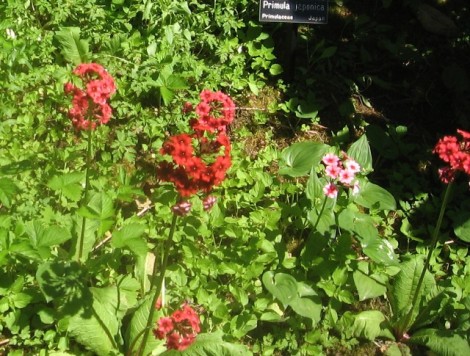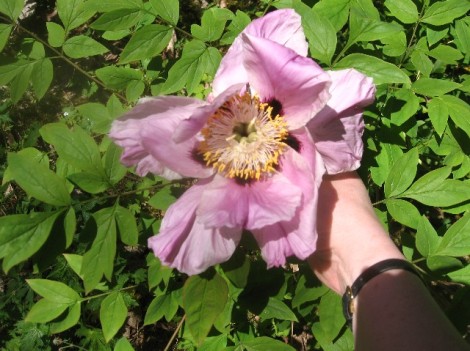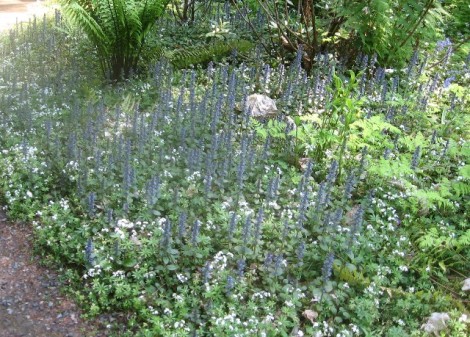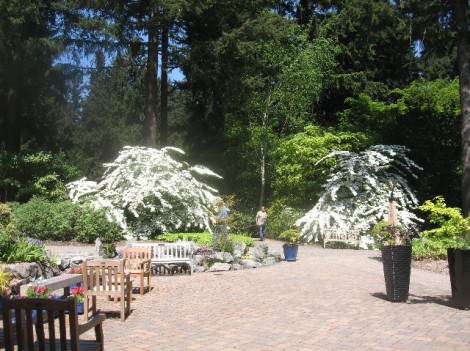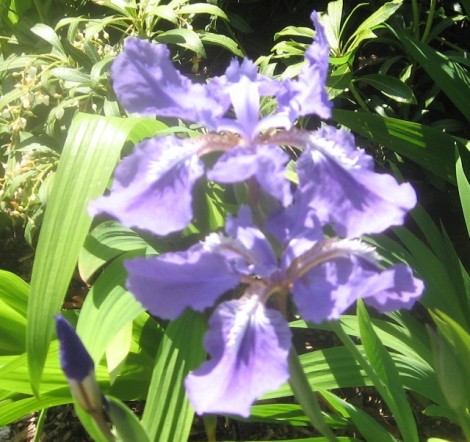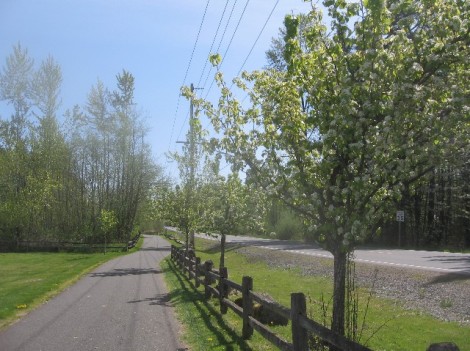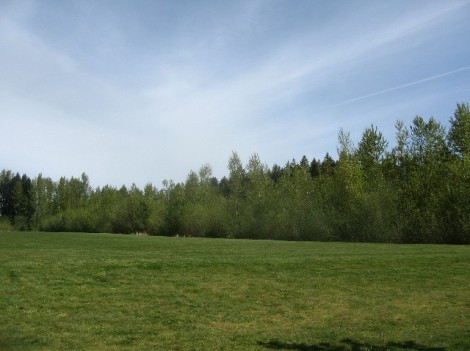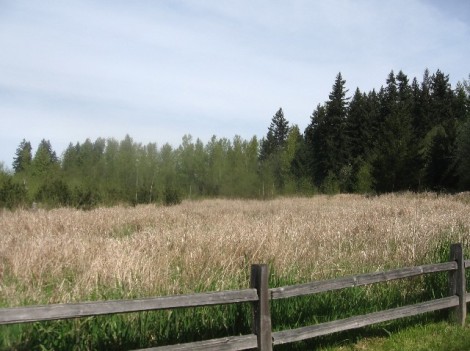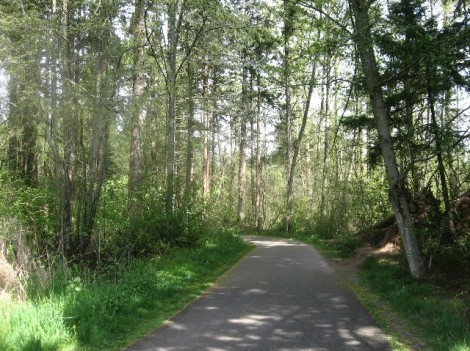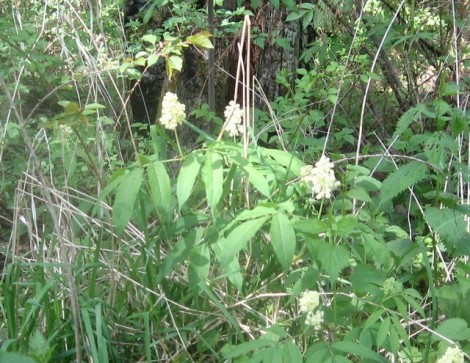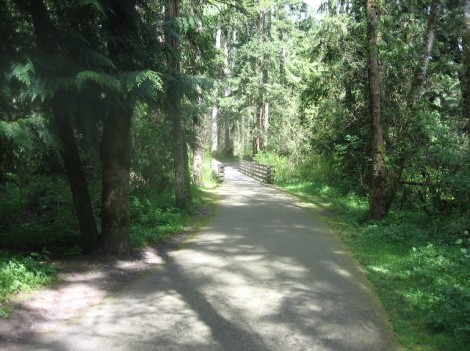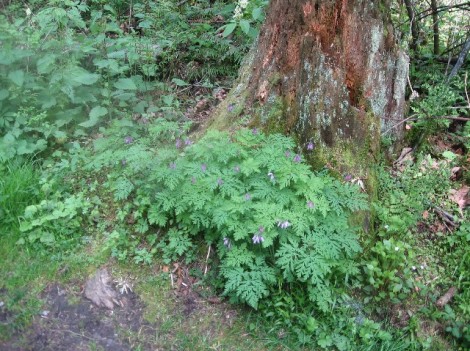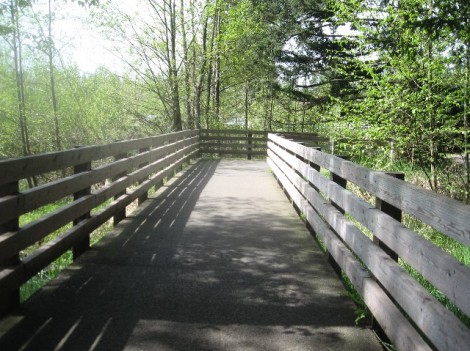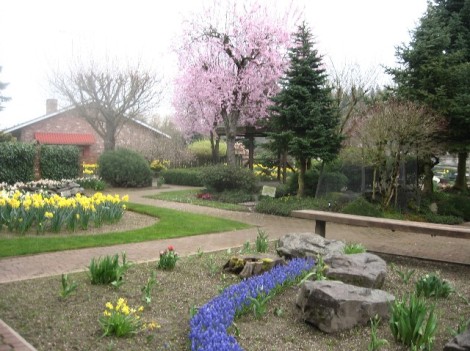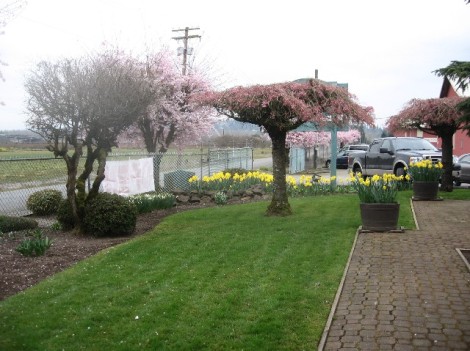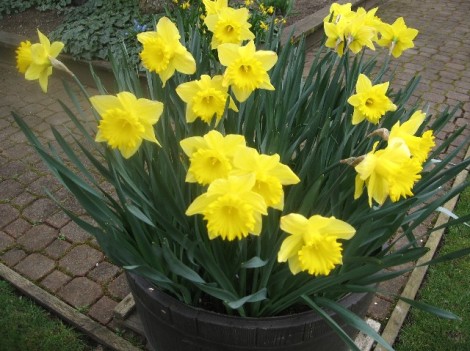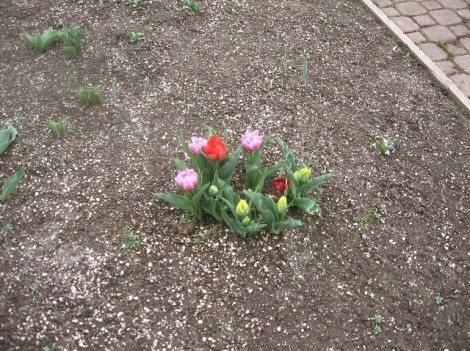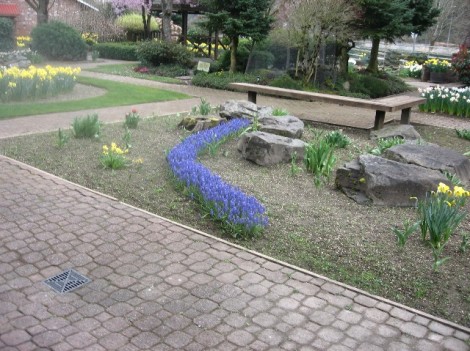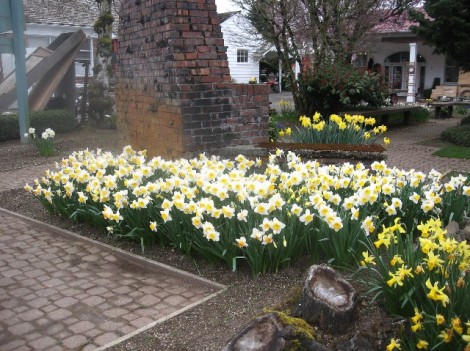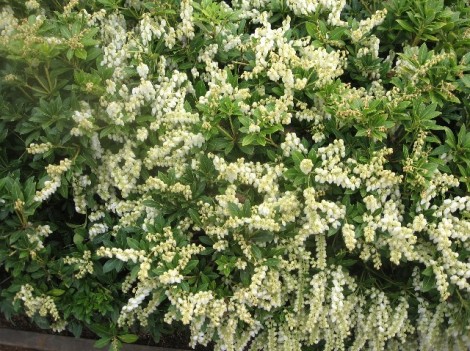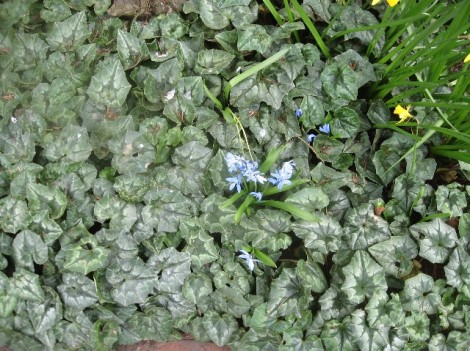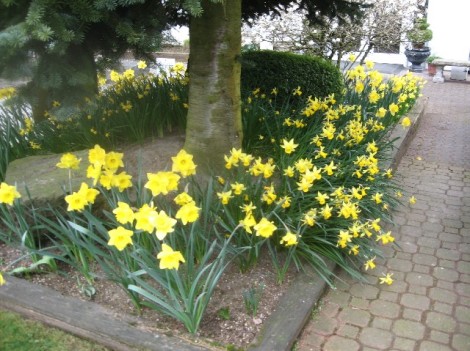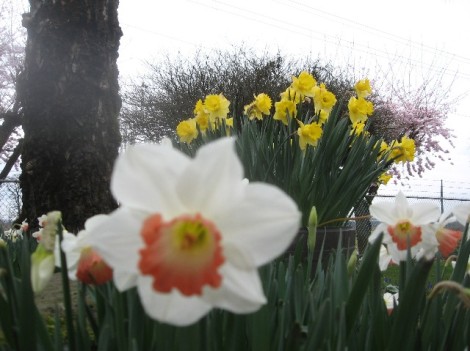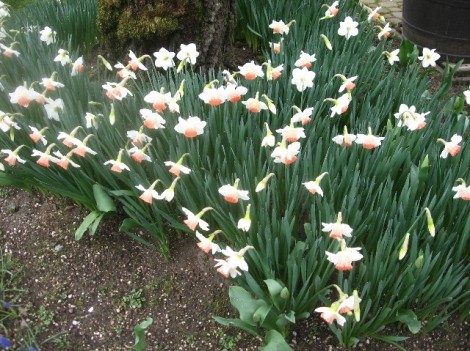Two weeks ago today I drove from Lincoln City to Seaside, plus side trips. The first one was down the Nestucca River National Backcountry Byway, as the brochure I picked up at the Yaquina Head Visitor Center the day before titled it.
This was the only real stretch of road on this trip that I hadn’t ever been on before, and I only drove sixteen miles of it. But what I did see was lovely. It started out very bucolic, with farms and cattle and crops. Mostly dairy cattle — I wasn’t all that far from Tillamook and its famous cheese factory, after all. Then it narrowed down to something of a real canyon, with twists and turns and a rapidly running river. I came around one bend to find a deer at the side of the road staring at me about as avidly as I was staring at it.
I only went as far as the first campground, and I was happy to see that it, at least, had not been leased and/or ‘improved’ into an imitation private campground. Tucking that away in my mental notes for the next time I came down here, I headed back to Hwy. 101. Why is it that going in on a road like that always takes twice as long as coming back out?
My next stop was entirely serendipitous. I saw a sign, out in the middle of nowhere along Hwy. 101, saying Quilt Shop. Well, how could I not check that out? I turned down a narrow little dirt road, and about half a mile in, came to the end at a house with a quilt shop underneath it (in a daylight basement). I went in, and was amazed at what I saw out there in the middle of nowhere — lots and lots of fabric and notions, and samples pinned up wherever there was space. I spent a little time in there prowling around, and came out with several fat quarters from a sale bin. I suspect I’m going to regret that I didn’t get yardage of one of them — it was a really nifty tone-on-tone world map.
After that, I drove on to Tillamook, where I ate lunch and went to the cheese factory. You can’t go to Tillamook without going to the cheese factory and getting ice cream. Well, you can get cheese, too, but you have to get ice cream. Tillamook Mudslide, by preference. Chocolate ice cream with fudge ripple and chocolate chunks. Yum. They used to carry a really delicious lemon pudding ice cream, too, but apparently they’ve quit making it. Their other flavors are lovely, but I adore the Mudslide.
The afternoon was spent tooling up the coast to Seaside, via Garibaldi, a little town on Tillamook Bay, where I visited their historical museum, which was mostly about Robert Gray and his ship Columbia. He was the one who discovered and named the Columbia River.
And via Cannon Beach, where I went to their historical museum. It was like Lincoln City’s museum in some ways. Cannon Beach (named after a ship’s cannon found not far from there) is an upscale tourist town, and has been one for most of its life.
I spent most of the rest of the afternoon walking the beach at Cannon Beach. I started at Tolovana Beach State Wayside, on the south end of town and walked all the way to Haystack Rock and back. Haystack Rock is another cool place to see tidepools, and here’s the evidence.
You can also see Tillamook Rock Lighthouse from here, just barely.
Tillamook Rock Lighthouse, or Terrible Tilly as it was called, is one of the most remote, desolate lighthouses in the U.S., if not the world. You can read about it at the link, but suffice to say it must have been one of the most dreaded postings in the lighthouse service. It is awfully picturesque, though. And then, at last, I drove up to Seaside and checked in at the Seaside Hostel. I’ve stayed here before on several occasions. It’s in an old motel, backing up to the river that flows through Seaside. Comfortable, convenient, and relatively cheap, and that was all I really needed for my last night on the road.

